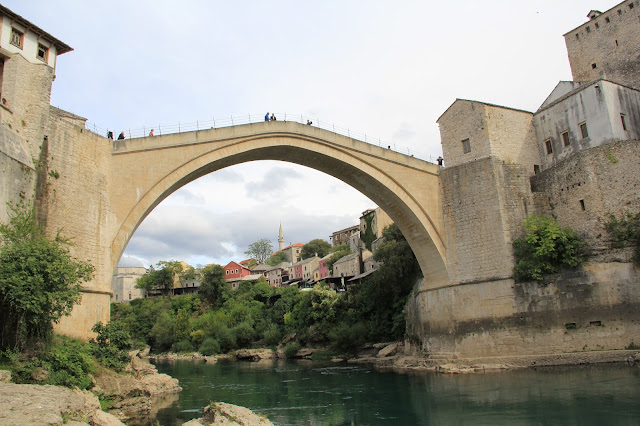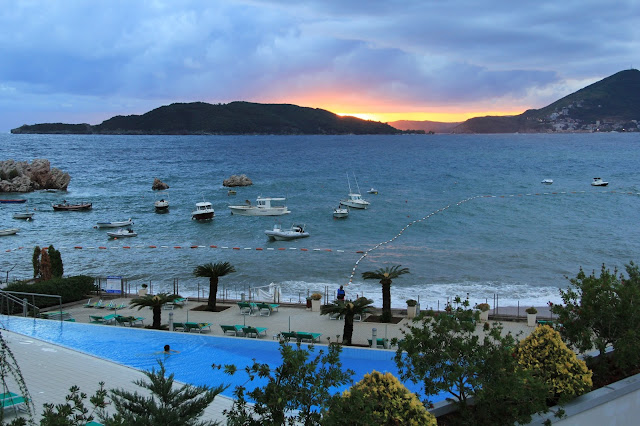Since Medieval time, Mostar was already one of the important cities along the trading routes in the Balkans. When the Ottoman Turks expanded their rule over the Balkans about six centuries ago, Mostar was the base of Turkish garrisons.
 |
| (River Neretva flows through the city) |
 |
| (Roman Catholic church and its tall tower) |
The landmark of Mostar is its Old Bridge which was built over the Neretva river for more than five centuries. The project architecture was under the master Ottoman architecture Sinan who built many famous mosques in Turkey. The stone bridge is 28 meters wide and 20 meters high. It looks like an arch of a big mosque. The bridge was recognized as one of the master Ottoman architecture works.
 |
| (Mostar Old Bridge reconstruction) |
 |
| (From the other side of the Mostar Old Bridge) |
 |
| (Over the stone bridge) |
Mostar suffered serious damages when ethnic wars broke out in the 1990s. Many buildings and the Old Bridge were damaged. After the war, European Union and United Nations helped Mostar in its reconstruction works. Now, the Old Bridge has regained its landmark position in Mostar. It is not only a popular spot for international tourists. It also has important meaning to the locals. The bridge represents communication and linkage between people of Mostar. They wish the regained peace will stay with them forever.
 |
| (Damaged house as reminder of war) |
 |
| (Cheerful street seller) |
There are cafes near the Old Bridge. It is a good idea to enjoy the Turkish coffee while watch the bridge from a distance. Try this when you are there next time.








%2B374.JPG)






%2B068.JPG)











%2B170.JPG)

